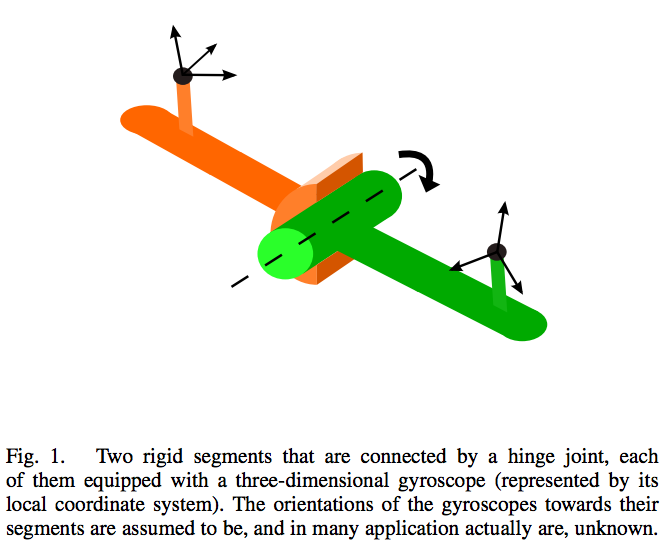I was reading this article called "Joint Axis and Position Estimation from Inertial Measurement Data by Exploiting Kinematic Constraints", but I'm not understanding one part, which doesn't let me proceed in the reading of the same.
From the physical point of view, we have the following situation:
Two segments (one orange and the other green) connected by a hinge joint. The 3-axis coordinate systems that you see in the picture (the one on segment orange and the other on the segment green) are the local coordinate systems of two 3-dimensional gyroscopes.
The dashed line that you see in the hinge should be the coordinate axis of the same joint. Since the joint can only move in one dimension, we have just one axis.
Now, given this setting, the authors say (first page, column at the right, at the end of the same):
... let the angular velocities of the gyroscopes, in the coordinates of their local frames, be $g_1(t)$ and $g_2(t)$ for the first and the second segment, respectively. Then it is a geometrical fact, that $g_1(t)$ and $g_2(t)$ differ only by the joint angle velocity and a (time-variant) rotation matrix
Questions
What is the joint angle velocity?
What is this time-variant rotation matrix?
Why do the angular velocities differ only by the joint angle velocity and a time-variant rotation matrix? What does it even mean, actually?

